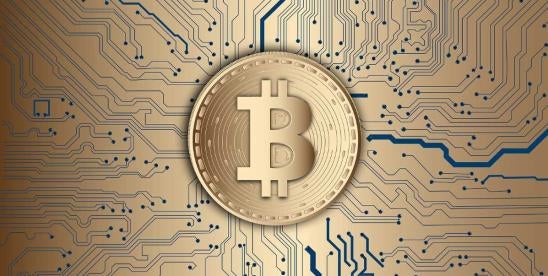Bankruptcy court assesses value and claims of cryptocurrencies

The bankruptcy court hearing the FTX Trading bankruptcy released a memorandum last month addressing the valuation of cryptocurrency-based claims and how to “calculate an appropriate discount to be applied to the filing date market price for certain cryptocurrency tokens.” As noted in the opinion by Bankruptcy Judge John Dorsey, “(n)o bankruptcy court has ever estimated the value of cryptocurrency-based claims, nor… has any court ever conducted a valuation of crypto assets.” The opinion is therefore required reading for parties in cryptocurrency bankruptcy proceedings, as it provides both debtors and non-debtor with a guide on how to value cryptocurrency claims.
Factual background
FTX Trading and its affiliates (collectively, the “Debtors”) filed for Chapter 11 on November 11, 2022 (the “Petition Date”). Creditors have asserted millions of claims to recover the value of cryptocurrency assets held by the Debtors (“Digital Asset Claims”). To streamline the planning and disclosure process and ultimately make distributions, the Debtors filed a motion to estimate the value of the Digital Asset Claims under Section 502(c)(1) of the Bankruptcy Code and provided the Court with a Digital Asset Conversion Table that included a proposed value to convert the Digital Asset Claims into dollar-based claims. The Court granted the Debtors’ motion to estimate all but three tokens: MAPS, OXY, and SRM (collectively, the “Tokens”). The Tokens were held by the Debtors and three other parties: (a) Maps Vault Limited (“Maps Vault”); (b) TMSI SEZC Ltd. (“TMSI”); and (c) Dondation Serendipity and three affiliated companies (“Fondation” and, together with Maps Vault and TMSI, the “Objectors”).
Unlike transaction tokens such as Bitcoin, which are used as a means of payment, the tokens in question are utility tokens. Specifically, MAPS and OXY are designed for use within the Maps.me platform and the Oxygen protocol, respectively. SRM is a native token of the Serum decentralized exchange and plays multiple roles on the Serum platform. In addition, at the time of the petition, the debtors held almost all of the tokens. Specifically, the debtors held over 99% of all MAPS tokens, over 97% of all OXY tokens, and over 95% of all SRM tokens. The remaining tokens were owned by the objectors. As a result of ownership concentration, the number of tokens traded on any given day is unusually low, and the market has a limited ability to absorb sales of the tokens, meaning that any increase in trading is likely to put downward pressure on the price (ievalue) of the tokens. In addition, some of the tokens were subject to a contractual obligation that required the debtors to keep the tokens “locked” until a later date.
Competing valuation methods
The debtors and objectors presented the court with different methods for valuing the tokens as of the petition date under Section 502(b) of the Bankruptcy Code.
The Debtors’ expert witness, Kevin Lu, testified regarding the market prices of the Tokens on the Petition Date (the “Spot Prices”). Professor Sabrina T. Howell (“Professor Howell”) then calculated two different adjustments to be made to the Spot Prices. First, Professor Howell calculated a discount at which the Debtors could have sold their Token holdings in an orderly liquidation as of the Petition Date (the “Asset Liquidation Discount”). Second, Professor Howell calculated a discount for cryptocurrencies that were not marketable on the Petition Date (the “Lack of Marketability Discount”). In doing so, Professor Howell used a model proposed by Albert Kyle and Anna Obizhaeva in 2016 (the “KO Model”) to calculate the adjustments. Based on the testimony of their experts, the debtors argued that the court should apply an asset liquidation discount of 100% for the MAPS and OXY tokens and 58% for SRM, and a lack of marketability discount of between 42% and 43% for MAPS, between 37% and 40% for OXY, and 32% for SRM. Thus, according to the debtors’ experts, the MAPS and OXY tokens had a value of zero on the petition date and the SRM token was worth less than half of its market value on the petition date.
In contrast, the expert appointed by Maps Vault and Fondation, Fotios Konstantinidis (“Mr. Konstantinidis”), determined the market price for the Tokens on the Application Date and then applied the “blockage discounting method” (the “Blockage Method”) to determine the appropriate value adjustment of the Tokens assuming a gradual liquidation. Using this method, Mr. Konstantinidis testified that the value of the Tokens should be discounted by 36% to 46%.
Finally, TMSI introduced an expert, Ioannis Gkatzimas (“Mr. Gkatzimas”), who used the KO model but limited his calculations to the value of the tokens held by TMSI, without taking into account the tokens held by the debtors. According to Mr. Gkatzimas, the SRM tokens should only be discounted by about 12.4%.
The court’s decision
The court began its analysis by rejecting the objectors’ argument that only the tokens held by the objectors should be valued, without taking into account the tokens held by the debtors. Such an argument, the court said, ignores the “practical implications” of the fact that the debtors hold almost all of the tokens and that any sale of the tokens by the debtors would have “immediate market impact.” The court therefore found that the limited valuation proposed by the objectors would result in a “grossly inflated value that does not accurately reflect existing market conditions.”
This left only the question of what discount should be applied to the value of the tokens on the filing date, given that the debtors own 95% of the token supply. To answer this question, the court reviewed the valuation methodologies submitted by the parties. The court rejected the use of the knock-out model, finding that the model was not designed to value an asset, but rather to calculate the transaction costs arising from a decision to take a position in a market of a certain size. The court instead accepted the use of the blockage method as an appropriate method to value the tokens, finding that it is a generally accepted method for determining the value of an asset on a specific date.
Nevertheless, the court found that Mr. Konstantinidis had used the blockage method inappropriately. First, the court found that the number of assets liquidated was too low because Mr. Konstantinidis had failed to consider how the debtors’ token holdings would affect the value. This failure resulted in an artificially high valuation of the tokens. Second, the court found that the trading volume used by Mr. Konstantinidis was too high, which also contributed to an artificially high value of the tokens. Third, the court found that the blockage method performed poorly over a long-term horizon required in this case.
Instead, the Court accepted the application of the blockage method proposed by Professor Howell in her counter opinion, in which she modified three of Mr Konstantinidis’ submissions. First, Professor Howell included both the tokens held by the objectors and the tokens held by the debtors. Second, Professor Howell modified the growth of trading volume to remain constant at the initial level after the petition date. Finally, Professor Howell used a model proposed by Stillian Ghaidarov to account for the likely increasing discounts for the tokens in the long-term time horizon.
Based on Professor Howell’s application of the blockage model, the Court applied a discount of 100% and 99.9% for the MAPS and OXY tokens, respectively, and an 18.6% discount for the SRM token. In making this decision, the Court acknowledged that its conclusion appeared to be at odds with the fact that the tokens had a positive trading price on the Petition Date. Nevertheless, the Court based its conclusion on the fact that the Debtors held virtually the entire supply of the tokens on the Petition Date, allowing only a free float (the number of tokens actually available for trading on the market) of less than three (3%) percent of the token’s maximum supply, which had the effect of keeping trading volume low and prices potentially artificially high.
Effects
Requests for claim estimation are common in most large bankruptcy cases, as some claims take a long time to settle and a case cannot continue indefinitely. However, the complex token estimation process in the FTX trading case provides a first glimpse into how a cryptocurrency creditor’s claim will be valued. Future cryptocurrency estimation litigation will surely be influenced by Judge Dorsey’s analysis of competing valuation methods and his adoption of the blockage model.
Stripping away the differing methodologies and submissions, FTX Trading’s opinion comes to a shocking conclusion: Some cryptocurrencies that supposedly had a positive market value at the time of the debtor’s filing may ultimately be worth nothing, meaning those creditors receive $0 for their claim. Although the bankruptcy court did not discuss this in detail, FTX Trading’s free-float strategy kept the tokens’ prices artificially high. This would obviously not apply to liquid, heavily traded cryptocurrencies like Bitcoin or Ethereum. But for certain cryptocurrency tokens where free float is an issue, courts will likely look behind the scenes to estimate the true value of a cryptocurrency claim and apply significant discounts.



:max_bytes(150000):strip_icc():focal(749x0:751x2)/noah-presgrove-tout-1-050324-4933b331b73546b2a0d6e5c06d095c3e.jpg)